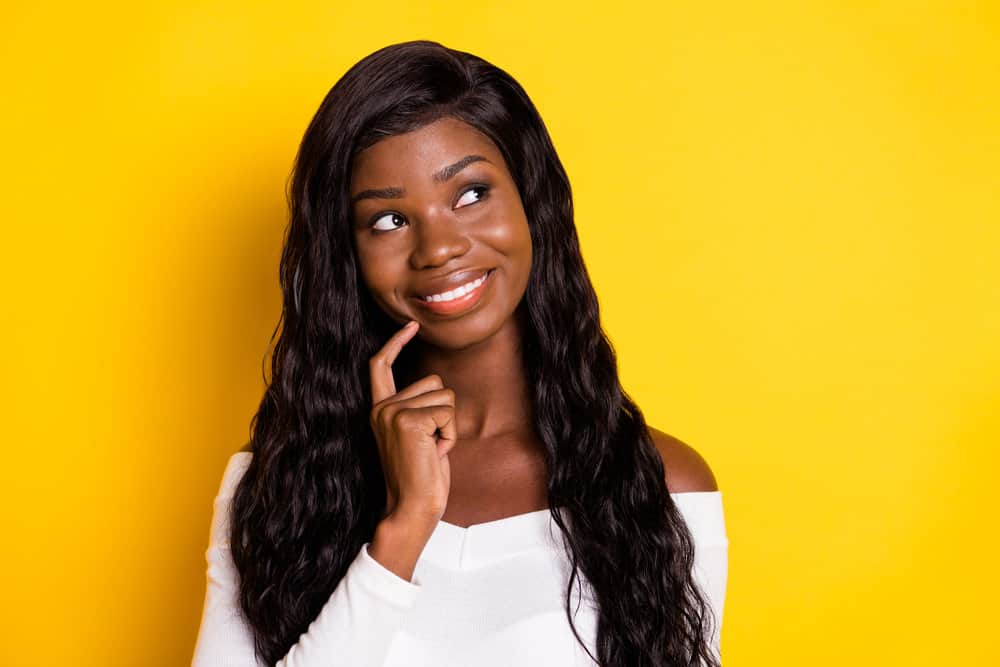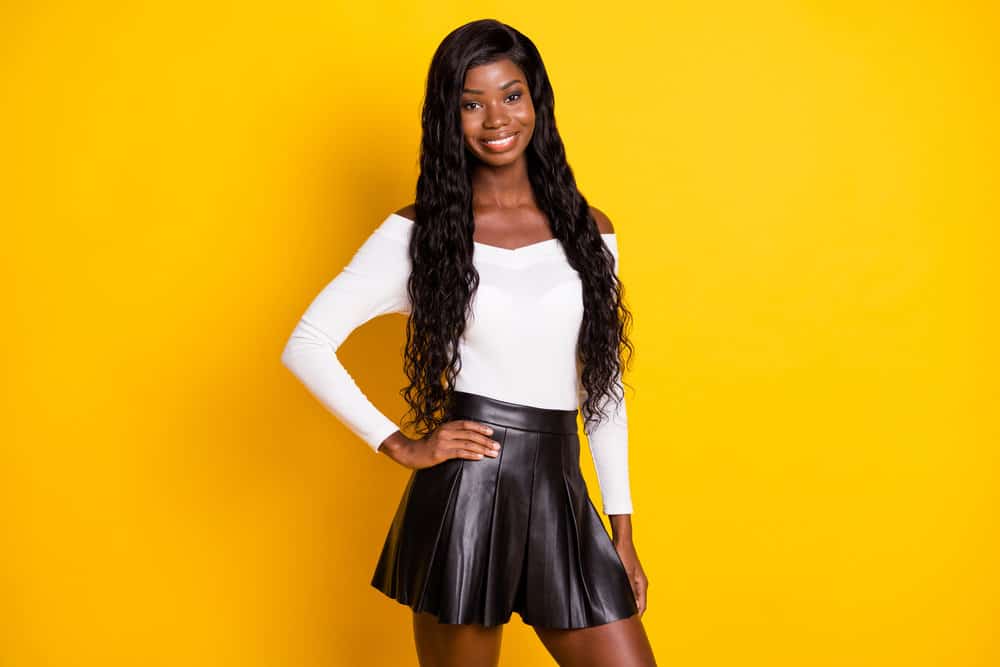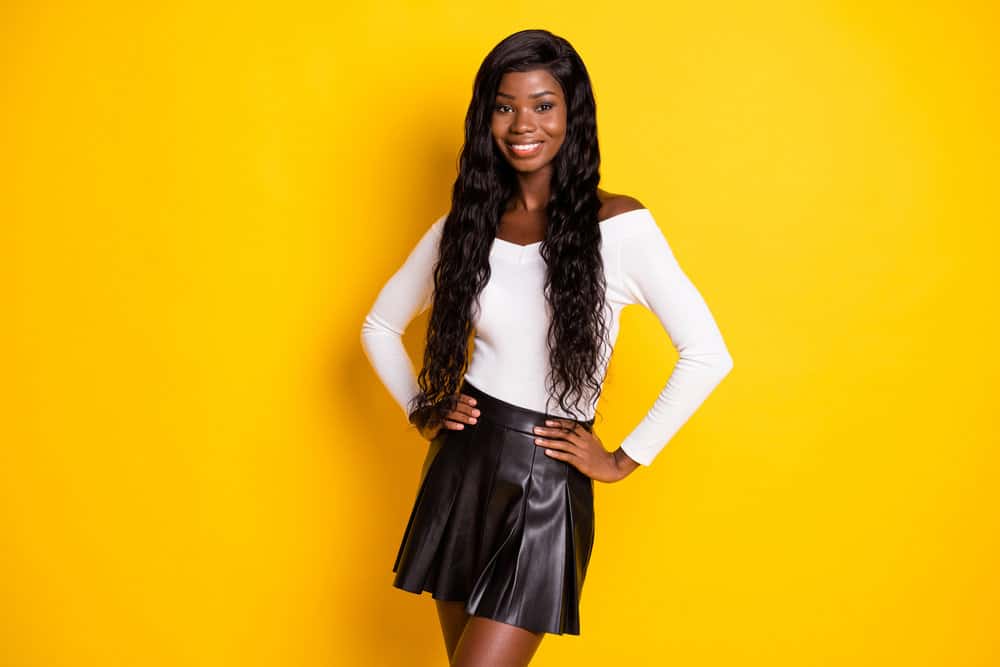
There are many wig aspects that new and aspiring wig wearers need to familiarize themselves with, including wig types, wig quality, wig installation tips, and more.
All of these are important, but one little-known wig facet that can make or break your unit is wig density. Wig density varies widely, and if you want to select the right density for your next unit, you’ll need to get educated.
So, what does wig density mean? That’s where we can help! In this article, we’ll define wig density in simple terms and explain everything you need to know.
Table of Contents
What Does Wig Density Mean?
Wig density refers to the number of hairs on a wig and how it affects the wig's thickness and volume. A thicker wig with a higher density will have more hair and sit higher on the head, making a bolder statement.
However, it may not look as natural as a thinner wig with a lower density. A thinner wig will look more realistic and natural but may not provide the same level of glamour and volume as a thicker wig. Therefore, the choice of wig density depends on personal preference and the desired style.

Wig Density Options
When it comes to wig thickness, there’s a system. The thickness of a wig is expressed as a percentage–anywhere from 60% to 250%. As the percentage goes up, so does the density of the wig. Keep reading to learn about the wig density options available to you!
Natural/Lower Density Wigs
If you’re looking for a wig that will appear natural and never look wiggy, low density is the way to go. Here are the natural or low-density options to be on the lookout for as you shop for your wig:
- 60 - 90% - These are the absolute lowest-density wigs you’ll find. This density is ideal for older people since they tend to have lower-density hair as they age.
- 100 - 110% - These wigs are widely accepted to be low-density. If you have low-density hair naturally and will be leaving some of your natural hair out, you may want to opt for 100 - 110% density. It will match perfectly.
- 120 - 130% - These wig densities are standard in the wig industry. You’ll find 120 to 130% density wigs everywhere because of their popularity. This density is similar to that of the average human head. If you want a natural look, you should choose this wig density.

Medium-Density Wigs
Looking for something that’s a little extra? Up the density with one of the below options! They give you more styling versatility and more to work with in general.
- 150% - A step up from 120-130% wig densities, 150% density is still natural, but on the fuller side. Choose this wig density if you like a little extra oomph in your hairstyles but still value a natural look. Wigs of this density won’t look as natural as the previous few densities, but they won’t look completely artificial either.
- 180% - We’re getting into thick territory here. With one glance, onlookers will see that your 180% density wig is thick. It looks noticeably thicker than natural hair, but it’s for good reason. You need a lot of hair to achieve bolder, longer, more glamorous styles.
High-Density Wigs
These are the highest-density wigs on the market.
- 200% - Even thicker than 180% density wigs, 200% density is not for the faint of heart. It’s a lot of hair. If you choose a wig with this density, you’ll need the confidence to match it!
- 250% - This is the absolute densest wig you can get anywhere. When you put it on, it won’t look like your natural hair, but that’s okay for people who love larger-than-life hair. It gives you all the hair you need to create virtually any look under the sun!

Wig Density Doesn’t Consider the Texture
Wig density is measured independently of the texture of the wig, and a wig’s texture can have a huge effect on how thick it appears. A straight wig and a curly wig could be the same density and look completely different.
For example, a curly 100% density wig could appear thicker than a 150% density straight wig. Since the density doesn’t account for a wig’s texture, you’ll have to.
If you normally wear a 150% density straight wig and you want a similar density in a curly wig, you’ll have to go for a lower density to pull that off. The curlier a wig is, the denser it may appear.
If you’re unsure how a wig’s texture will affect the perceived density, you can always contact the wig seller or manufacturer and see what they recommend.
How to Find out What Wig Density Works for You
Totally new wig wearers often find it difficult to select the right wig density. The best way to do this is to try some wigs on. If you plan on buying a wig in person, you can go into the wig shop and try on a few wig options.
But keep in mind some wig shops have a wig try-on limit; two to three is about standard. While you’re there, you can also talk to the staff and get some wig-density recommendations.

In addition to trying a wig on in person, you can use your own hair density as a guide. Most people have some idea of how dense or thick their hair is.
If your hair is on the thinner side, you can go with a low-density wig if you want to keep things natural or go up to a medium-density unit for some added thickness.
For folks with medium-thick hair, a density that falls toward the middle of the range will look natural for you, but you can also graduate to high-density wigs if you want to experiment with big hair.
What’s a Good Starting Point for Wig Density?
Once you get your first wig, you’ll have a relatively easy time choosing a density the second time around. But where do you start if you’ve never worn a wig before? We recommend a 120% or 130% density wig for your first unit.
Not only will this density work for most, but you won’t have any trouble finding a wig you like in this density. If you’re in advanced age, you may want to start a bit lower on the density scale - around 80% to 100% density if you want your wig to look the most realistic.

The Wig Density You Choose Affects the Price
Budget-conscious wig shoppers will want to know that wig density affects the price of a given unit. As you might expect, the lower a wig’s density, the lower the price. The reason for this is simple: the higher the density of a wig, the more hair it has.
The more hair needed, the more a wig company will have to pay to manufacture it.
Those increased manufacturing costs are passed to the buyer in most cases, so keep your eye on the price tag when switching from a lower-density wig to a higher-density wig.
This is not to say that you should stay away from higher-density units because of the price. If you've found that high-density wigs are your jam and would make you feel beautiful, then the price will be well worth it.
But it does help to know what you'd be getting into financially when shopping around for your next wig.
What Density Wig Looks the Most Natural?
Generally, wigs with lower density tend to look more natural than those with higher density, as they mimic the look of natural hair. A 130-150% density is often considered the sweet spot for achieving a natural-looking wig, as it provides some volume and fullness without looking too dense.
What Is a High-Density Wig?
A high-density wig typically has a 180% or higher density and is designed to provide a fuller, more voluminous look. High-density wigs can be an excellent option for those looking for a dramatic, statement-making hairstyle, but they may feel heavier and require more maintenance than lower-density wigs.
What Is a Low-Density Wig?
A low-density wig typically has a density of 80-100% and is designed to provide a natural, subtle look. Low-density wigs can be a great option for those who want to enhance their natural hair without drawing too much attention to the fact that they're wearing a wig. Keep in mind that low-density wigs may require more styling.

What Is the Best Density for a Deep Wave Wig?
When it comes to choosing the best density for a deep wave wig, it really depends on your individual preferences. A 130-150% density is often a good choice for achieving a natural-looking deep wave wig, but you may also want to consider a higher density if you want a more voluminous look.
What Is the Lowest Density Wig?
The lowest-density wig typically has a 60-70% density and is designed to provide a very natural, subtle look. These wigs are great for those who want to enhance their natural hair without drawing any attention to the fact that they are wearing a wig. But, they may not hold their shape as well as higher density wigs.
- Is 150 Density Good for a Curly Wig?
- 150 Density Wig vs. 180
- What Is the Difference Between 130 and 150 Density Wig?
So, there you have it–all you need to know about wig density for beginners. You now know what the term is, how to find out which wig density is best for you, and more.
We hope you found all the information you needed, and we wish you the best as you shop for your first or next unit!




